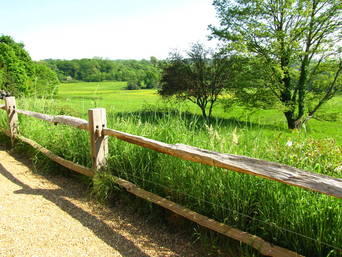 Historic England - the field below the Abbey in Battle Sussex near Hastings, where part of the famous battles of 1066 were fought.
Historic England - the field below the Abbey in Battle Sussex near Hastings, where part of the famous battles of 1066 were fought. We have traveled to England only once, which happened in 2012 for the Royal Jubilee celebrations, so genealogy was not its primary purpose. Although we didn’t step foot in a single record office, we did manage to squeeze a few cemeteries into our schedule. It was a moving experience to actually touch gravestones from the 1800s and to walk in the churches where some of our ancestors had worshiped.
One of our stops was at Hastings on the south coast of England, where we stayed overnight near the train station in a comfortable bed and breakfast (the only one that we stayed at that didn’t serve breakfast). We visited the nearby town of Battle and saw where the Battle of Hastings really took place in 1066. Places in England are SO much older that in Canada! Also nearby was the small village of Brede where several generations of my RICHARDSON relatives lived from the late 1600s to the mid 1800s. This was even more thrilling to me!
Several years before we traveled to England, I had contacted the Sussex Family History Group and obtained a list of Richardson burials, indexed from the Brede parish registers. So I knew there were 56 such burials recorded between 1736 and 1877, even though I couldn’t place all of these Richardsons in my tree. I also realized that the tombstones for the older burials might not have survived, but I hoped there would still be lots to see, hopefully including the grave of my 3G grandfather Henry Proctor RICHARDSON (the first) who died in 1850.
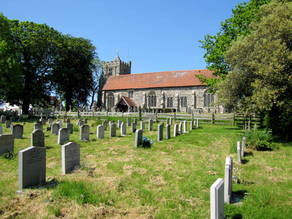 The south wall of St George's church viewed from the lower cemetery, in Brede, Sussex, England
The south wall of St George's church viewed from the lower cemetery, in Brede, Sussex, England - 1 large upright stone commemorating 2 burials: William North Richardson (1876, aged 30 years), and his mother Jemima Richardson (1877 aged 69 years)
- 2 small foot stones: W N B 1876?; M A R 1879???
- 1 small oak cross
That was all. The 2 small stones can’t be identified with certainty, although one may have been a foot stone for the same William North Richardson listed on the bigger stone. And I am only guessing when I suggest that the other small stone was for Jemima's youngest daughter Mary, born 1855 - no further record of her has been found, and the burial records don't include 1879, if in fact that is when a death occurred. The other three burials were for relatives, but not direct ancestors.
"But it has a relic of a tragic Victorian love story in the form of a small oak cross bearing the single word 'Damaris'. Damaris Richardson lived with her uncle in a modest cottage in Rectory Lane. She was a beautiful orphan who worked at the rectory and in a small residential school operated by Rev Maher to supplement his income. She fell in love with Lewis Smith, the handsome young son and sole heir of a wealthy Brede landowner, and they would meet in secret at the west wall of the churchyard - she on the graveyard side and Lewis on the other, in the grounds of the big house where he lived with his parents.
They soon agreed to become unofficially engaged. But affairs are hard to conceal in a small village community and somebody told Lewis' father of the clandestine meetings. He angrily forbade any ideas of marriage - beautiful, charming and respectable Damaris might be, but she stood far below the station of the Smith family. Lewis, threatened with being cut off without a shilling, gave way to his father.
Presumably there was one final meeting of farewell beside the wall before they parted forever. Damaris, they say, died of a broken heart at the age of 22 and was buried near the trysting place, on September 4th 1856. Her grave was unmarked until the Rev Aylward, who years later succeeded Mr Maher as Rector of Brede and remembered the orphan from his days as a pupil at the village's school, commissioned the erection of the cross. Lewis Smith never married, living alone and withdrawn in the big huse he inherited. Villagers say he was often to be seen walking gravely in the gardens, close to the wall. He died, age 65, on february 1896 and was interred in the family tomb on the north side of the church.”
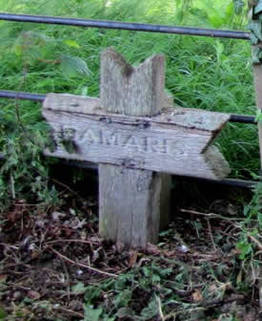 Small oak cross in memory of Damaris RICHARDSON, Saint George's churchyard, Brede, Sussex, England
Small oak cross in memory of Damaris RICHARDSON, Saint George's churchyard, Brede, Sussex, England Damaris RICHARDSON was baptised in this very same St George’s Church in Brede on 27 Apr 1834, the daughter of my 3G grandparents Henry Proctor RICHARDSON and Ann PACKHAM. She was my great-great-great Aunt who did in fact die at the young age of 22 in Brede on 29 Aug 1856. According to the burial index, she was buried 5 days later in the churchyard. But I can’t vouch for the exact location of the meetings between the two young lovers.
Damaris was also an orphan because her mother Ann had died young in 1838 after childbirth, and her father Henry had died in 1850. Damaris would have been 4 years old when her mother died, and 16 when her father died, so she would not have had an easy childhood. It might also help explain why she didn’t have a proper gravestone.
So what happened to Damaris after her father died? Another version of this story also says that "Damaris Richardson was an orphan who lived with her uncle Thomas Wakeham Richardson in a house in Rectory Lane. She spent a good deal of her time at the Rectory assisting Mrs Maher in household duties connected with the Rector's residential pupils."
Looking in my tree for the identity of her “uncle” Thomas, I see that he was actually her first cousin once removed. Considering the generation gap, it was probably easier for her to call him “uncle”. This Thomas Richardson (Jr.) was the son of her great uncle Thomas, brother of Henry and Susannah (mentioned below). And to bring this full circle, this “Uncle” Thomas was the one who married a Jemima and had a son William North Richardson (named after Thomas’s brother), both of whom were buried beside Damaris.
Other researchers have told me that Lewis Smith, the young man who loved yet shunned her, was also a relative of hers, a second cousin. Lewis’s grandmother was Susan (or Susannah) Richardson, the sister of Damaris’s grandfather (another Henry). Susannah married a David Smith, a local farmer, and it was their son David Jr. who had a son Louis (or Lewis) Smith. In 1851 David Jr was farming 500 acres with 20 hired labourers. So the family had become prosperous, but Damaris was a poor orphan. It would have been Louis’s father David Jr. who reportedly vetoed the marriage and threatened disinheritance, even though his own mother was a Richardson. Louis was the oldest son, but as he had other siblings; I don't know if he was the sole heir. As second cousins are generally allowed to marry, perhaps his father didn’t want him to intermarry. But if David was wanting better prospects for his oldest son, that seems to deny the worth of his own relatives, which seems rather hypocritical to me!
[I must apologize for the continued repetition of some of these names in multiple generations - a common but very confusing practice by many ancestors, making relationships more difficult to understand as well as explain.]
I can find no record of a marriage for Damaris. And I have not yet confirmed what became of Louis Smith.
So what of this tale of a broken heart? According to Damaris's death certificate, her official cause of death was "phthisis pulmonalis some months”. In other words, she died from pulmonary tuberculosis, sometimes referred to as consumption. But I have no doubt that she would have been devastated by Louis's rejection of her, and compounded by the extreme emotions of youth, probably felt that life was not worth living without him. This trauma could have affected her immunity to disease at least. But it does make a much better story to say that she died of a broken heart.
As to the other details of this story, I can only hope that there is at least some grain of truth in them. I am grateful to whoever eventually erected the sturdy little oak cross as a memorial to this young woman who endured too much tragedy in her short life. It and her story will hopefully endure for a lot longer.
My Richardson Family Tree has even more details.
For more details of our trip to Brede, visit our travel blog (scroll down for LOTS of photos).
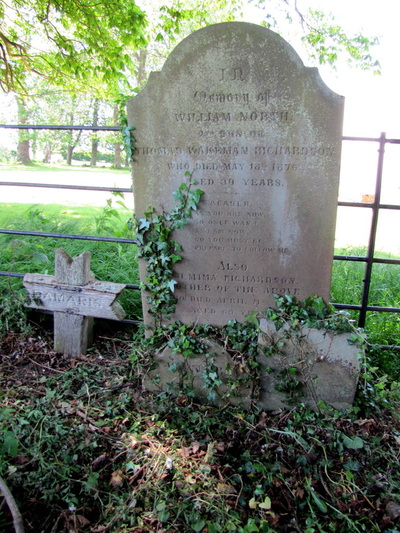

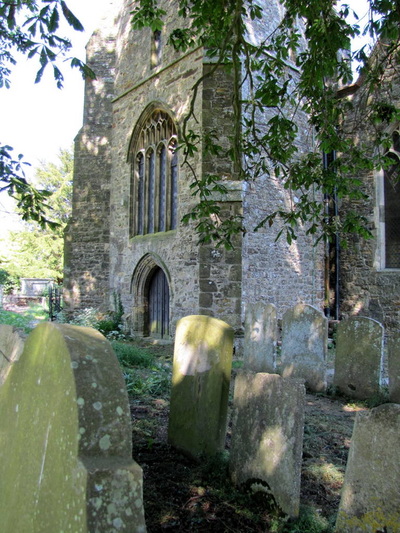
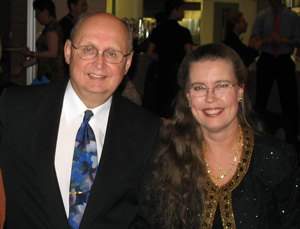

 RSS Feed
RSS Feed
